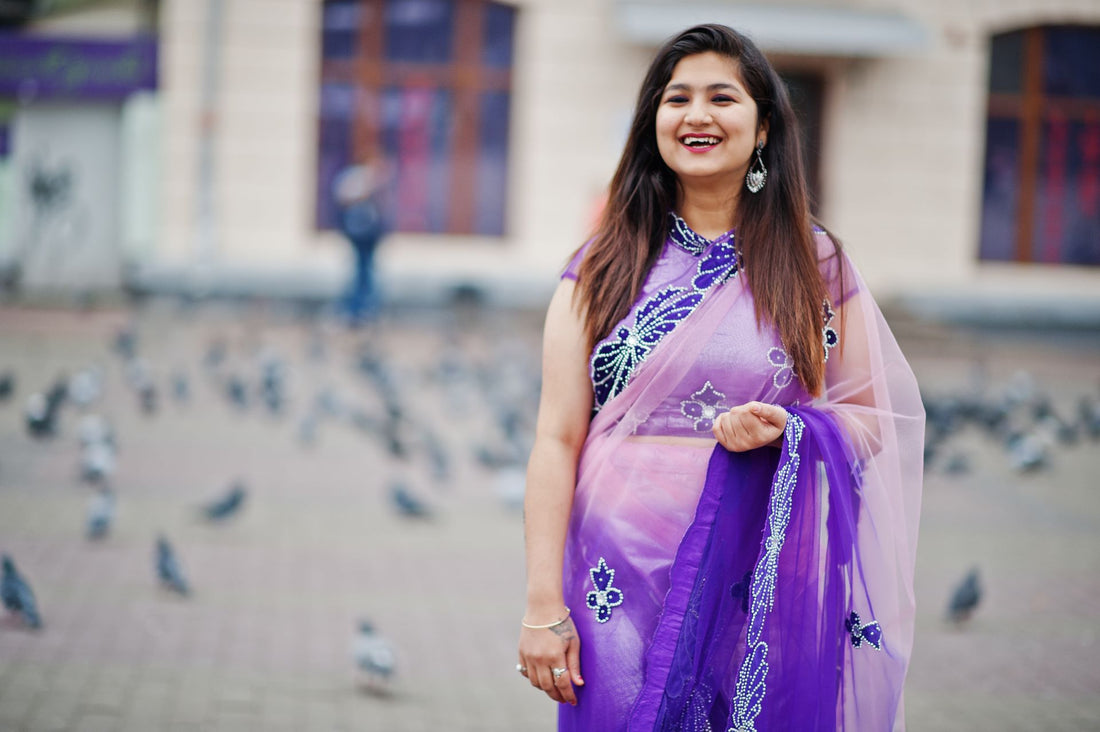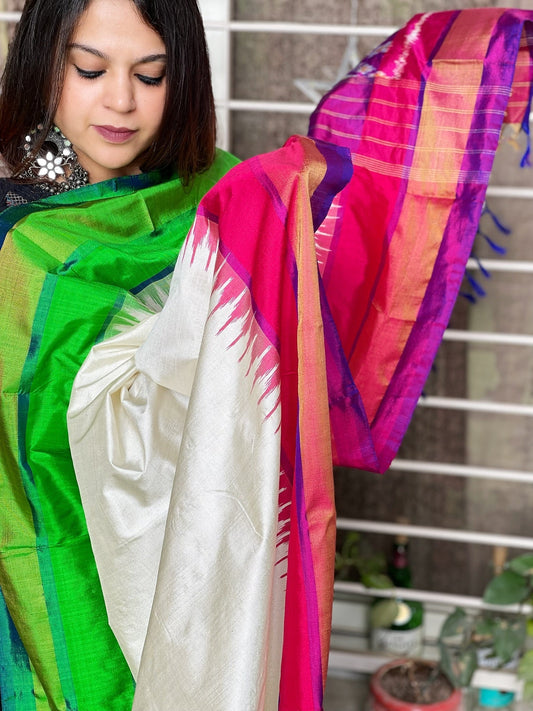Leheriya tie dye is a vibrant and intricate art form that hails from Rajasthan, India. This technique is renowned for its unique patterns and bright colours, which mimic the flow of water. The term "Leheriya" itself means "wave" in Hindi, capturing the beautiful wave-like patterns that are the hallmark of this dyeing method. The art of Leheriya has been passed down through generations, and it continues to be a symbol of cultural heritage and artisanal skill.
Creating a Leheriya dupatta involves a meticulous and labour-intensive process. Artisans carefully bind and dye the fabric to achieve the signature wave patterns. This traditional craft requires precision and expertise, as even a slight mistake can affect the overall design. The textiles are usually dyed in vibrant hues, making them stand out and adding a pop of colour to any outfit.
Understanding the history and craftsmanship of Leheriya tie dye not only enhances our appreciation of these beautiful dupattas but also helps us make informed choices when buying them. Knowing how to recognise authentic Leheriya and learning different ways to style these dupattas can enrich your wardrobe and connect you to a piece of Indian heritage.
The History and Origins of Leheriya Tie Dye
Leheriya tie dye has a rich history rooted in the royal and cultural traditions of Rajasthan. This art form dates back over 500 years and was initially patronised by the royalty and wealthy merchants of the region. The vibrant patterns were worn during monsoon season festivals, symbolising waves of rainwater that bring life to the arid landscape of Rajasthan. Leheriya patterns also represent joy and celebration, making them a popular choice for various festive occasions.
The craft originated in the city of Jaipur and spread to other parts of Rajasthan over time. Traditional Leheriya was dyed using natural pigments obtained from plants and minerals. These natural dyes not only produced vivid colours but also ensured that the fabric remained soft and breathable. The art of Leheriya was passed down through families, with each generation adding its own flair and techniques to the craft. Today, while synthetic dyes have made the process faster, some artisans still prefer using natural dyes to maintain the authenticity of the tradition.
The Intricate Process of Creating Leheriya Dupattas
Creating a Leheriya dupatta is a meticulous process that involves several steps, each requiring precision and skill. It all begins with selecting a suitable fabric, usually lightweight cotton or silk. The fabric is then washed thoroughly to remove any impurities that could affect the dyeing process.
1. Binding: The washed fabric is folded diagonally multiple times and then tightly bound with threads at regular intervals. This binding process creates the resist areas that form the wave-like patterns once dyed.
2. Dyeing: The bound fabric is dipped into a dye bath. Traditional Leheriya uses natural dyes, but modern versions often use synthetic dyes for a quicker process. The fabric is dyed in the lightest colour first, usually yellow.
3. Drying and Rebinding: After the initial dyeing, the fabric is dried and then rebound in a different pattern for the next colour bath. This step can be repeated multiple times depending on the number of colours desired.
4. Final Wash: Once the dyeing process is complete, the fabric is washed again to remove any excess dye and dried. The threads are carefully removed to reveal the unique Leheriya pattern.
The entire process can take several days to complete, especially if multiple colours are involved. The craftsmanship lies in the perfect execution of binding and dyeing, ensuring that the patterns are crisp and the colours are vibrant. This traditional method ensures that each Leheriya dupatta is a unique piece of art, carrying the legacy of Rajasthan's rich cultural heritage.
Recognising Authentic Leheriya: Key Features to Look For
Recognising an authentic Leheriya dupatta involves observing a few key features. Genuine Leheriya exhibits a certain level of craftsmanship that can't be easily replicated by machine-made products. Here are some indicators to look for:
1. Pattern Precision: Authentic Leheriya patterns have a crispness and fluidity that reflect skilled handwork. The wave-like lines should flow naturally, without abrupt changes or breaks.
2. Colour Transition: Genuine Leheriya often uses multiple dye colours, creating a smooth gradient from one colour to the next. The transitions should be seamless, showcasing the expertise of the artisan.
3. Fabric Quality: Traditional Leheriya dupattas are usually made of lightweight, breathable fabrics such as cotton or silk. Feel the fabric's texture—it should be soft and comfortable against the skin.
4. Thread Marks: Look for tiny thread marks or indentations. These marks are left behind from the binding threads and are a sign of traditional tie-dye techniques. Unlike perfect dye patterns, these small imperfections add to the charm and authenticity of the piece.
By paying attention to these features, you can ensure that you're investing in a genuine, high-quality Leheriya dupatta that showcases true artisanal skill.
Styling Tips: How to Wear Your Leheriya Dupatta
Leheriya dupattas are versatile and can be styled in various ways to complement different outfits. Here are some simple and stylish ways to wear your Leheriya dupatta:
1. Classic Drape: Simply drape the dupatta over both shoulders. This traditional style is perfect for showcasing the intricate patterns and vibrant colours of the Leheriya fabric.
2. One-Shoulder Drape: For a more modern look, drape the dupatta over one shoulder and let it fall naturally. This style works well with both casual and semi-formal outfits.
3. Belted Dupatta: Add a belt around your waist to secure the dupatta in place. This is a chic way to wear Leheriya with a blouse and skirt or even a pair of jeans.
4. Headscarf: For a unique twist, fold the dupatta lengthwise and wrap it around your head like a scarf. This not only adds a splash of colour to your look but also protects from the sun.
Experiment with these styles to find the one that suits you best. A Leheriya dupatta can elevate any outfit, making it a versatile and essential piece in your wardrobe.
Conclusion
Leheriya tie dye is more than just a vibrant textile technique; it's a piece of Rajasthani heritage that has been cherished for centuries. From its historic origins to the intricate process of its creation, each Leheriya dupatta tells a story of craftsmanship and tradition. By recognising the key features of authentic Leheriya and exploring different styling options, we can appreciate the true beauty and versatility of this unique fabric.
At Masakalee, we take pride in curating an exquisite collection of Leheriya dupattas that reflect the highest standards of traditional craftsmanship. Whether you are looking to add a pop of colour to your everyday outfit or searching for the perfect accessory for a special occasion, our range of handmade dupattas offers something for everyone. Visit Masakalee today to find your perfect piece and embrace the timeless elegance of Leheriya.












